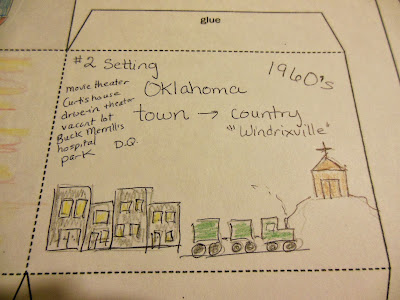This is an example of a final draft. It does need a little more editing and perhaps a little more added information. How Do We Learn About a Character in a Book or Story? -- what the character says or thinks, and how he or she says it -- what the character does --what other characters say or think about this character or what the narrator tells us See Basic 8, Book #2 Assessment -- Character CubeWhen creating your final draft, you may use pictures and words, or just words, but make your cube colorful and interesting.
By October 19 --
c Complete the cube for your book in ink and color on the cardstock-weight paper template. Turn into the wire basket FLAT.
c Write a one-paragraph description of your assignment and what grade you should earn on it on the separate paper provided. Staple to your final draft cube.
 |
By October 18, create your final cube, but do not cut it out. Hand it in with the two sheets indicated. |
 |
| Side 5 will show evidence from what your character does. |
 |
| Side 6 will show evidence from what other characters --or the narrator -- say about your character. |
 |
| Side #4 will show evidence from what your character says or thinks. |
 |
| Side #3 will show a drawing or other illustration of your character. |
 |
| Side #1 will give information about your book and about you. |
 |
| Side #2 will be about the setting: time and place. |
